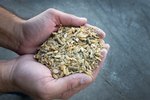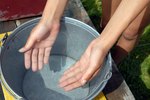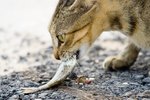
If you’re a label reader you might have noticed that your pet’s food has a listing for ash content, though this isn’t required so not all feeds show it. While it sounds like something you might scrape out of your fireplace -- nothing more than cheap filler or something that ends up in animal food by accident -- it’s not. The ash level is actually a measure of certain things that are already in the food, not unwanted additives or filler.
Method
The amount of ash is determined by subjecting animal food to high temperatures under laboratory conditions. Once everything that will burn away is gone -- the carbohydrates, proteins and fats -- ash is all that’s left. It's then measured and the percentage of ash is determined based on how much food there was to start with and how much ash remains at the end of the process. This is the amount that’s listed on the label as part of the guaranteed analysis.
Content
Ash residue is composed of various types of minerals, often from animal sources such as bone and meat. It typically also contains the remains of any mineral additives the manufacturer uses to enhance the food. The main components of ash are usually phosphorous and calcium, but it also normally contains other minerals such as iron and zinc. Anything in the food that won’t burn ends up being counted as part of the ash.
Purpose
Knowing the amount of ash is of limited value, since the value represents the total ash and doesn’t provide any insight into which specific minerals it represents. What it does tell you is how much of the food is composed of minerals. This information is especially useful for owners of large-breed puppies, cat owners and those with animals that have kidney problems, since reducing the amount of minerals in the diet can help to minimize certain growth and urinary tract problems.
Benefits
Since minerals are an important part of an animal’s diet, some ash is desirable. On the other hand, too much may end up causing crystals to form in the urinary tract, including the kidneys and bladder, especially in animals that already have kidney disease. According to the Utah Veterinary Clinics, foods with a low ash content are helpful in controlling urinary tract problems in cats. Excess minerals can also cause bone and joint problems in fast-growing, large-breed puppies as well as horses and other animals, so foods with a high ash content should be avoided.
References
Photo Credits
-
Brand X Pictures/Brand X Pictures/Getty Images




